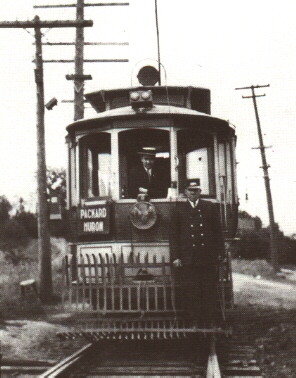|
|
"In 1888, Ann Arbor had approved a railway system that ran in the village streets. Until that point, travelers were affected by the poor quality of the steam power was used to propel the cars. " |
|
|
"In 1888, Ann Arbor had approved a railway system that ran in the village streets. Until that point, travelers were affected by the poor quality of the steam power was used to propel the cars. " |
|
Being located next to the Huron River proved to be beneficial for the first settlers of Ann Arbor. The water source gave people access to power; settlers used steam power to propel motors (what type of motors?) before electricity was available in Ann Arbor. Along with coal, steam was integral to the function of railway cars that brought new settlers and necessary freight, like food, lumber, building supplies and dry goods, to the area. |
|
When the conversion of steam to electric power occurred in 1896, there were initial problems with electricity. The transmission of electric signals used to power railway cars on city streets did not travel further than twenty miles. This limited the area to which the cars could operate. However, converting to electric power did create great advantages for travelers within the village. In 1888, Ann Arbor had approved a railway system that ran in the village streets. The construction of the system was completed in 1890. Until that point, travelers were affected by the poor quality of the steam power that was used to propel the street cars. With the conversion to electric power, service on the rail cars was greatly improved. The railway cars allowed the citizens to get jobs further from their homes, which helped expand the city and gave access to better employment for many people. Many of the jobs were located in businesses in the downtown area, such as stores and other companies. Citizens that did not live close to that area had previously been forced to walk or depend on other means of transportation, such as horses. |
| In addition, it was cheaper to travel on the Ann Arbor and Ypsilanti Electric Street Railway (10 cents) than the Michigan Central Railroad (25 cents). |  |
| The Ann Arbor railway system also ran more frequently. The railway was very popular with the young men on the campus of the University of Michigan. At this time, Eastern Michigan University had a largely female student body. The railway that connected Ann Arbor to Ypsilanti provided them with transportation for weekend social events like public dances. |
|
While the street rail cars were increasing in popularity, the railroads that ran to Detroit were losing importance. People began to realize the need to link the railroad to locations south of Ann Arbor to broaden their customer base and to maintain healthy finances. This was accomplished with the Ann Arbor - Toledo Railroad. |